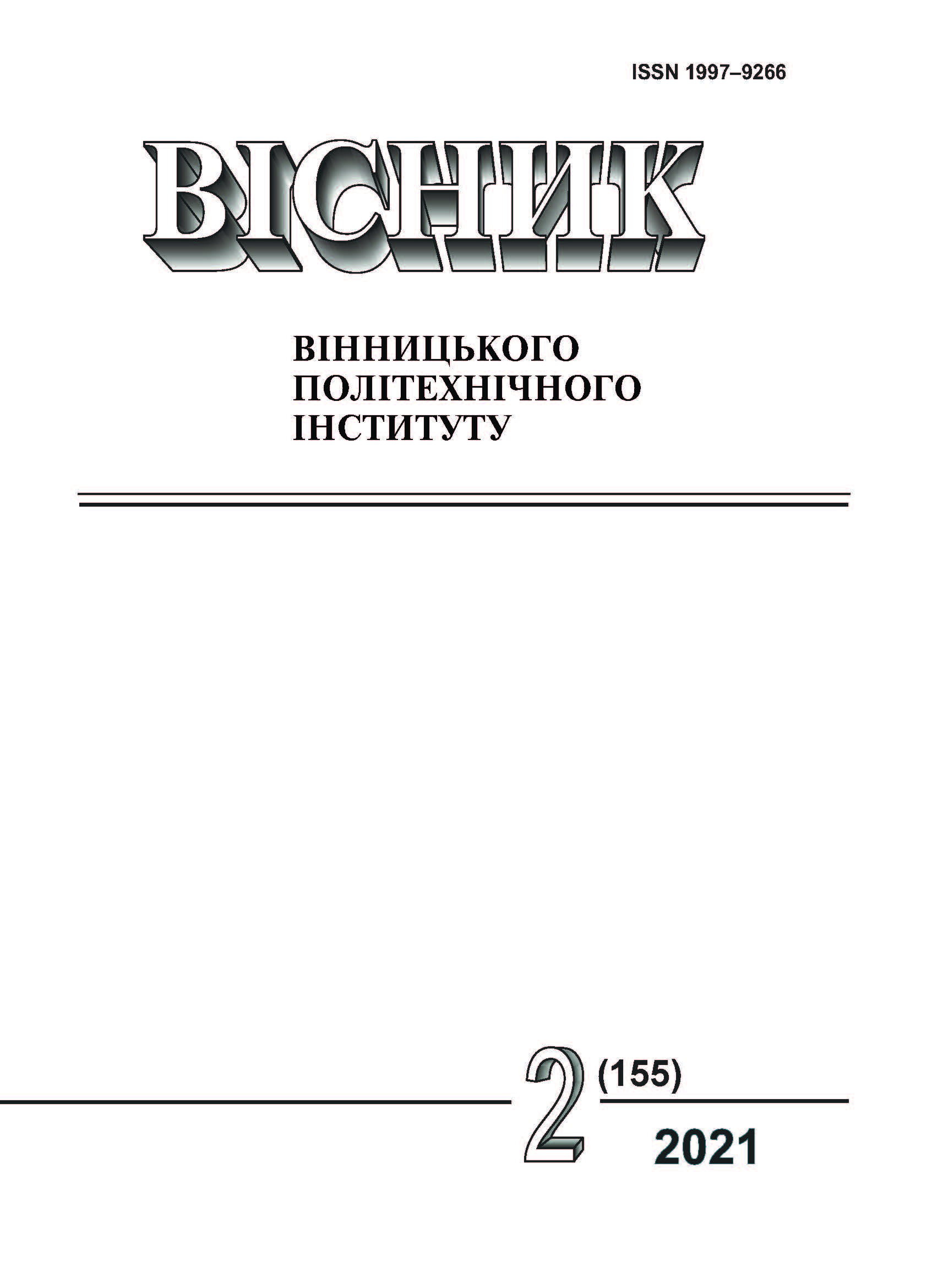Changing in the Optical Properties of Water by Discharge Treatment
DOI:
https://doi.org/10.31649/1997-9266-2021-155-2-120-125Keywords:
water, transmittance, scattering and absorption, nanoparticles, discharge, technical waterAbstract
Presently the ecological state of the environment, in particular water is an actual task. Water quality is determined by the impurities it contains and the pH level. Clean water is water whose quality is sufficient for the healthy life of people, animals and plants that consume water. There is practically no chemically pure water (H2O) in nature. Glow discharge of atmospheric pressure in the air between the metallic and liquid electrodes is used for the purification of water. Also an urgent issue is the study of nanoparticles and the possibilities of their application. Nanostructured materials range in size from 1 to 100 nm and can be made from a wide range of materials with unique properties and functions. Nanoparticles are given a lot of attention due to their high stability in biological fluids, as well as long shelf life. The purpose of the work was to study the effect of discharge on water by the method of radiation absorption. А tungsten lamp was used as the radiation source. For comparison, the intensity of the radiation source obtained by passing through an empty cuvette and the radiation intensity obtained by passing through a cuvette with liquid were used. Discharge-treated water obtained by igniting a glow discharge over water in a cuvette made of plexiglass, one electrode was a copper needle, and the other — the surface of distilled water. The anode was a copper needle with a diameter of 2 mm, and the cathode was a copper plate. The experiments were performed at a distance between the tip of the anode and the surface of distilled water of 7 mm and the thickness of the solution above the surface of the metal cathode 5 mm. The transmission of pure water is maximum in the wavelength range 450…550 nm. The absorption spectra of distilled water before and after discharge treatment are very similar in the wavelength range less than 500 nm, and as the wavelength increases, the action of the discharge causes an increase in absorption. The absorption of impurities in the region of 400…650 nm indicates a predominant role in the absorption of compounds based on O, S atoms. The results of the research of optical characteristics of the liquid are presented. There has been shown the wavelength dependence of emission intensity for various aqueous solutions and varying purity water. For different water solutions the transmittance coefficient is investigated. The role of the O, S, H, N compounds in absorption is discussed.
References
В. И. Нарыков, Ю. В. Лизунов, и М. А. Бокарев, Гигиена водоснабжения. СПб., РФ: СпецЛит, 2011, 120 с.
Ф. М. Гайсин, и Э. Е. Сон, Электрофизические процессы в разрядах с твердыми и жидкими электродами. Свердловск: изд-во Уральского университета, 1989, 432 с.
А. К. Шуаибов, Л. В. Месарош, М. П. Чучман, і І. А. Грабова, «Ультрафіолетова газорозрядна лампа з рідинним катодом». Патент України 88219 МПК Н 01 S 3/097 (2006. 01), з 11.03.2014.
M. Yu. Malyukina, L. V. Piliai, O. O. Sedih, V. K. Klochkov, and N. S. Kavok, «Аggregation stability of nanoparticles based on rare-earth elements in different microenvironment and biological media,» Biophysical bulletin, рр. 5-16, 2018.
А. К. Шуаибов, М. П. Чучман Л. В. Месарош, и И. А. Грабова, «Источник неканцерогенного ультрафиолетового излучения с накачкой тлеющим разрядом в системе электродов “металлическая иголка–поверхность воды”,» Приборы и техника эксперимента, с. 90-94, 2013.
В. В. Шелковников Расчеты ионных равновесий в химии. Томск, РФ: изд-во Том. ун-та, 2006, 70 с.
A. K. Pikaev, and B. G. Ershov, “Primary products of the radiolysis of water and their reactivity,” Usp. Khim., 36:8 (1967), 1427-1459; Russian Chem. Reviews, 36:8 (1967), 602-620.
П. Кронберг, Дистанционное изучение земли. Москва: Мир, 1988, 343 с.
А. И. Перельман, Геохимия природных вод. Москва: Наука, 1982. 154 с.
Н. А. Аристова, И. М. Пискарев, А. В. Ивановский, В. Д. Селемир, Г. М. Спиров, и С. И. Шлепкин, «Инициирование химических реакций под действием электрического разряда в системе твердый диэлектрик-газ-жидкость,» Журнал Физической химии, с. 1326-1331, 2004.
И. М. Пискарев, И. П. Иванова, и С. В. Трофимова, «Химические эффекты самостоятельного искрового разряда. Моделирование процессов в жидкости,» Химия высоких энергий, с. 152-156, 2013.
W. S. Pegau, D. Gray, J. Ronald, and V. Zaneveld, «Absorption and attenuation of visible and near-infrared light in water: dependence on temperature and salinity,» Applied optics, рр. 6035-6046, 1997.
Downloads
-
PDF (Українська)
Downloads: 243
Published
How to Cite
Issue
Section
License

This work is licensed under a Creative Commons Attribution 4.0 International License.
Authors who publish with this journal agree to the following terms:
- Authors retain copyright and grant the journal right of first publication.
- Authors are able to enter into separate, additional contractual arrangements for the non-exclusive distribution of the journal's published version of the work (e.g., post it to an institutional repository or publish it in a book), with an acknowledgment of its initial publication in this journal.
- Authors are permitted and encouraged to post their work online (e.g., in institutional repositories or on their website) prior to and during the submission process, as it can lead to productive exchanges, as well as earlier and greater citation of published work (See The Effect of Open Access).





